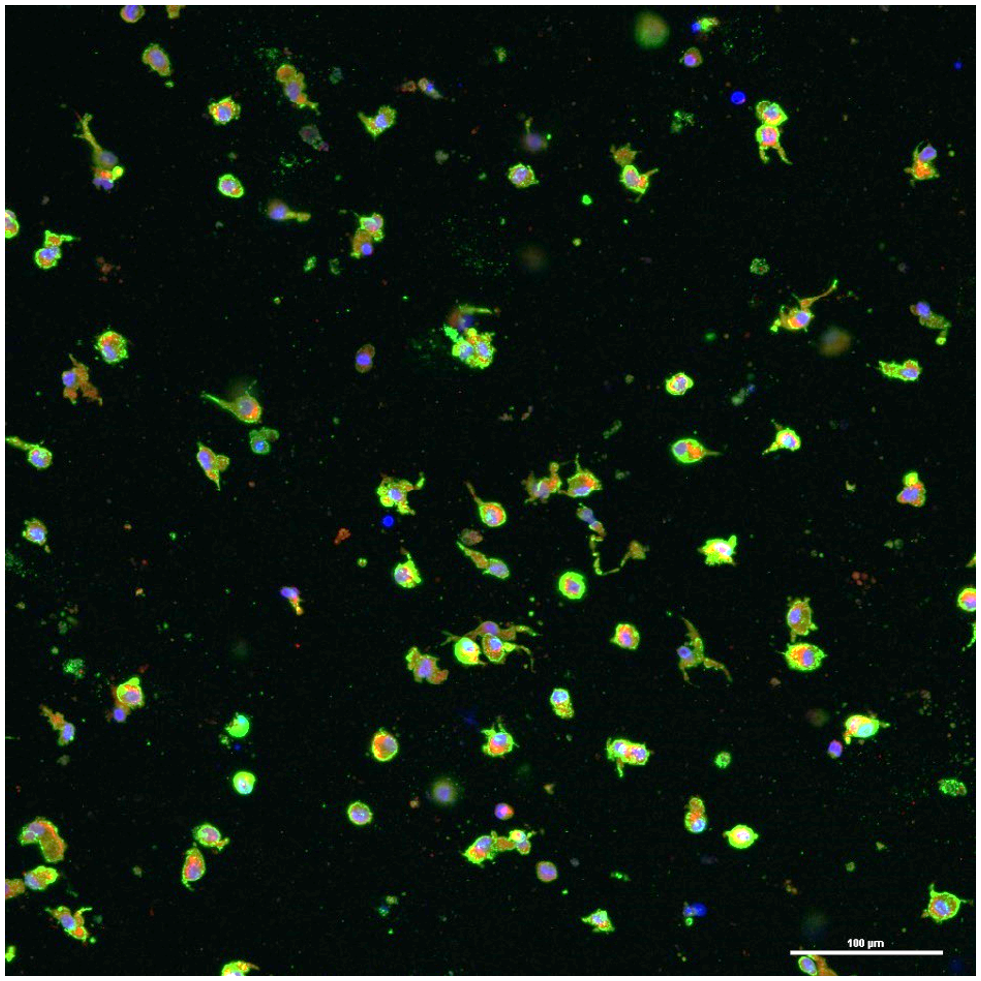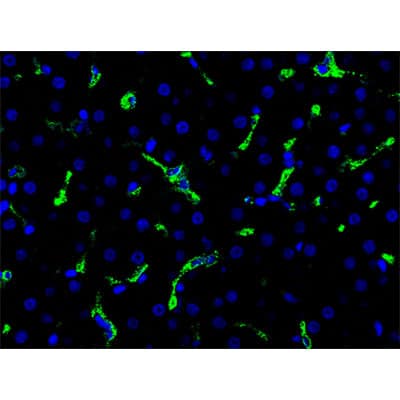| Reactivity | HuSpecies Glossary |
| Applications | ICC/IF, IHC |
| Clone | K20-T |
| Clonality | Monoclonal |
| Host | Rabbit |
| Conjugate | Unconjugated |
| Description | This antibody is immunoaffinity purified with immunogenic peptide as a ligand. |
| Immunogen | Peptide derived from N-terminal sequence of human CD163. Antibody recognizes the epitope between Gly134 - Gly148. |
| Epitope | Gly134 - Gly148 |
| Marker | Histiocytic Marker |
| Specificity | This antibody is specific for the N terminus of CD163. |
| Isotype | IgG |
| Clonality | Monoclonal |
| Host | Rabbit |
| Gene | CD163 |
| Purity | Immunogen affinity purified |
| Innovator's Reward | Test in a species/application not listed above to receive a full credit towards a future purchase. |
| Dilutions |
|
|
| Application Notes | Use in Immunohistochemistry-Frozen was reported in scientific literature (PMID: 24798518). |
|
| Reviewed Applications |
|
|
| Publications |
|
| Storage | Store at 4C. Do not freeze. |
| Buffer | 20mM Tris-HCl (pH 8.0) and 20mg/ml BSA |
| Preservative | 0.05% Sodium Azide |
| Purity | Immunogen affinity purified |
| Images | Ratings | Applications | Species | Date | Details | ||||||||||
|---|---|---|---|---|---|---|---|---|---|---|---|---|---|---|---|

Enlarge |
reviewed by:
Fabio Henrique Brasil da Costa |
ICC | Human | 11/26/2018 |
Summary
Comments
|
||||||||||

Enlarge |
reviewed by:
Verified Customer |
IHC-P | Human | 03/04/2013 |
Summary
|
Secondary Antibodies |
Isotype Controls |
Research Areas for CD163 Antibody (NBP1-30148)Find related products by research area.
|
The concentration calculator allows you to quickly calculate the volume, mass or concentration of your vial. Simply enter your mass, volume, or concentration values for your reagent and the calculator will determine the rest.
5 | |
4 | |
3 | |
2 | |
1 |
| Fabio Henrique Brasil da Costa 11/26/2018 |
||
| Application: | ICC | |
| Species: | Human |
| Verified Customer 03/04/2013 |
||
| Application: | IHC-P | |
| Species: | Human |